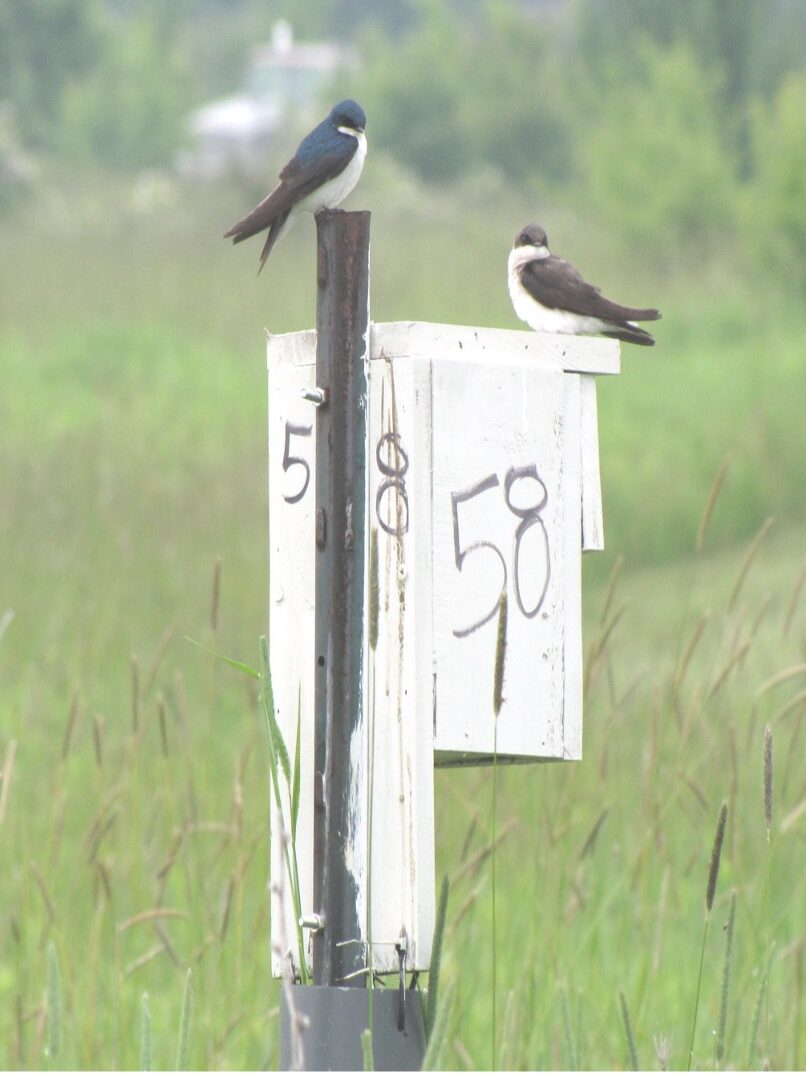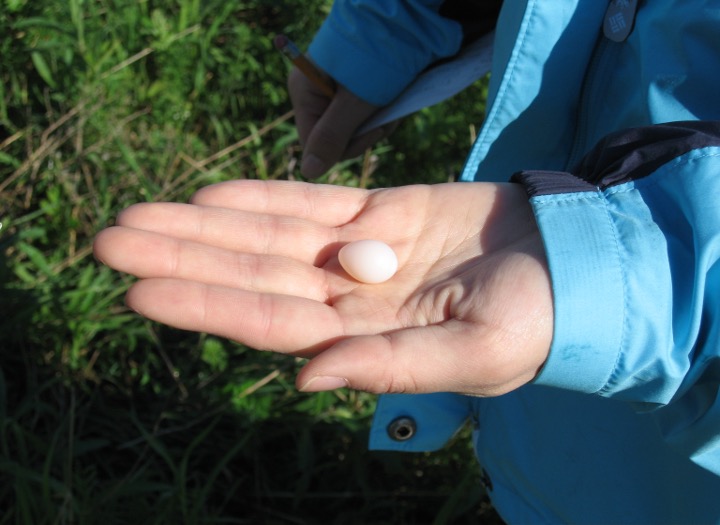Many bird species have advanced their first egg dates in response to recent milder winters and increases in spring temperatures. My colleagues and I studied the timing of egg laying by Tree Swallows nesting in boxes in west Michigan from 1993 to 2018. Within species, birds that begin laying earlier in the breeding season tend to produce more offspring that subsequently become breeders than do those that begin laying later. In a 2020 paper in the Journal of Field Ornithology, my colleagues and I showed that Tree Swallows at our study site that began laying early, but not too early, in the breeding season produced the most offspring that became breeders in subsequent breeding seasons. Thus, laying earlier may be evolutionarily adaptive because, as R. A. Fisher argued in “The genetical theory of natural selection” (1958), parental evolutionary fitness can best be estimated by the number of offspring produced that become parents themselves.
Tree Swallows typically arrive at our study site on the Grand Valley State University campus in Allendale, MI during April and begin egg laying in early- to mid-May. Both yearling and older female Tree Swallows breed at our study site. Older females arrive from migration earlier and begin laying about 7 days before yearling females. Tree Swallows are aerial insectivores, and their flying insect prey are more available during warmer air temperatures. Cold, rainy weather reduces the availability of flying insects. Therefore, we tracked air temperatures and rainfall from 1993 to 2018 to see if these affected the timing of egg laying by yearling and older female Tree Swallows. We predicted that first egg dates of Tree Swallow breeding at our study would be earlier in years with warmer spring temperatures in ways consistent with numerous other studies of Tree Swallows.
From 1993 to 2018, mean daily April temperatures did not get warmer but mean daily May temperatures did and increased by 3.1° C. There were no significant differences between April and May in mean total rain or mean number of days with rain. For both April and May, mean total rainfall and number of days with rain were not significantly correlated each other or with year.
In response to warmer April and May temperatures older, but not yearling, females began laying earlier in the breeding season. Counterintuitively, the first egg dates of yearling females got earlier when there were more days in May with measurable rain. This outcome is counterintuitive because rain tends to decrease the availability of aerial insect prey. In summary, it turned out that first egg dates of yearling females were, on average, 6 days earlier in 2018 than in 1993 while those of older females were, on average, 3 days earlier in 2018 than in 1993.
However, the relationships between weather conditions and first egg dates of yearling and older females were complex and varied yearly. The climatic conditions that influence Tree Swallow first egg dates are complex because stochastic rain and wind conditions interact with air temperatures to affect the availability of the swallows’ aerial insect prey influencing female foraging success thereby influencing the ability of females to begin egg laying.
While laying earlier may seem to be advantageous, it may result in (a) increased chances of encountering inclement weather early in spring that can lead to nest failures during egg laying, incubation, and the early part of the nestling period and (b) a mismatch between the earlier emergence and peak abundance of insects needed to feed nestlings. Aerial insectivores may be especially sensitive to inclement weather and climate change because of their effects on the availability of aerial insects.
Several Tree Swallow populations, along with populations of other aerial insectivores in eastern North America, have suffered declines during the last few decades. A mismatch between the availability of ecological requirements such as food resources of breeding birds arriving on breeding grounds and egg-laying earlier has the potential to cause further population declines. Indeed, we predict that advancing first egg dates in the face milder winters and warmer springs coupled with unpredictable periods of cold snaps and rain during the early part of the Tree Swallow breeding season may lead to further population declines. We hypothesize that earlier laying dates are likely to have a greater effect on the lifetime reproductive success of older, rather than yearling, female Tree Swallows because older females typically begin egg laying earlier in the season. Because advancing first egg dates may increase the exposure of early egg-layers to unpredictable bouts of inclement weather that lead to nest failure, we predict that recruitment in subsequent breeding seasons will decline because most local recruits (i.e., young birds that return to breed in their natal areas) are produced earlier rather than later in the breeding season. Moreover, migratory species like Tree Swallows may continue to suffer lower reproductive success if the climate continues to warm and first egg dates continue to get earlier. Therefore, earlier first egg dates in response to milder winters and warmer springs that seem at first glance to be adaptive may be contributing to the decline of some Tree Swallow populations and likely the population declines observed in other aerial insectivores in eastern North America.
Michael Lombardo
Emeritus Professor of Biology
Department of Biology
Grand Valley State University
The results of this study were recently published in the Journal of Field Ornithology:
Lombardo, M. P., N. Wagner, J. M. Laughlin, S. Otieno, L. Rosendall, C. Voetberg, and A. Hoban. 2024. First egg dates of Tree Swallows (Tachycineta bicolor) nesting in boxes in west Michigan advanced with increasing spring temperatures between 1993 and 2018. Journal of Field Ornithology 95(1):12. https://doi.org/10.5751/JFO-00434-950112.
Header photo: Tree Swallows (Tachycineta bicolor) by Jello5700 | Getty Images.



